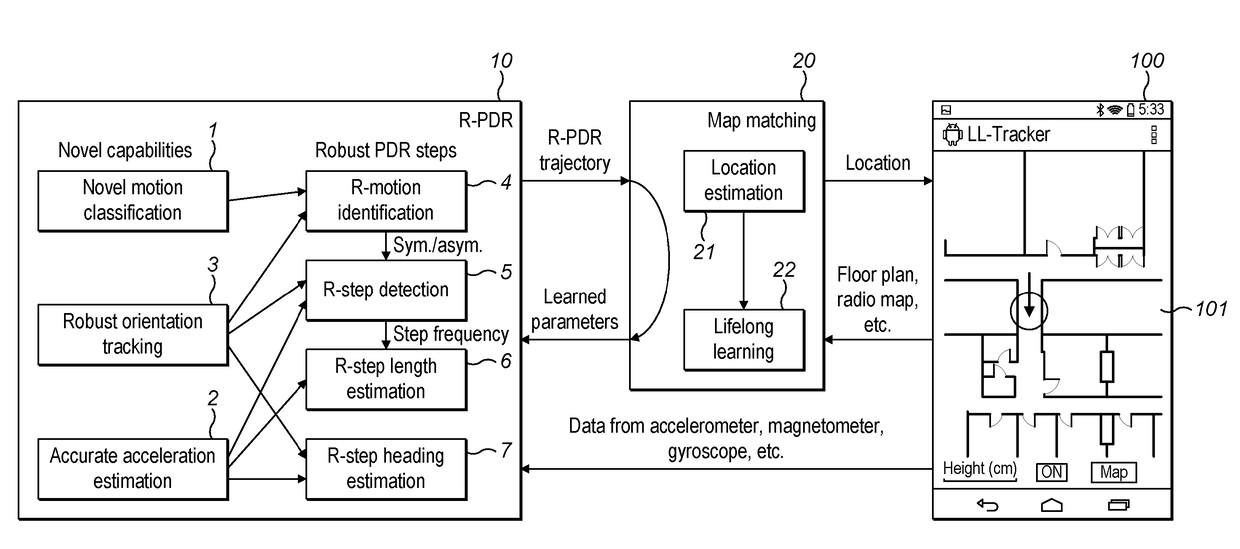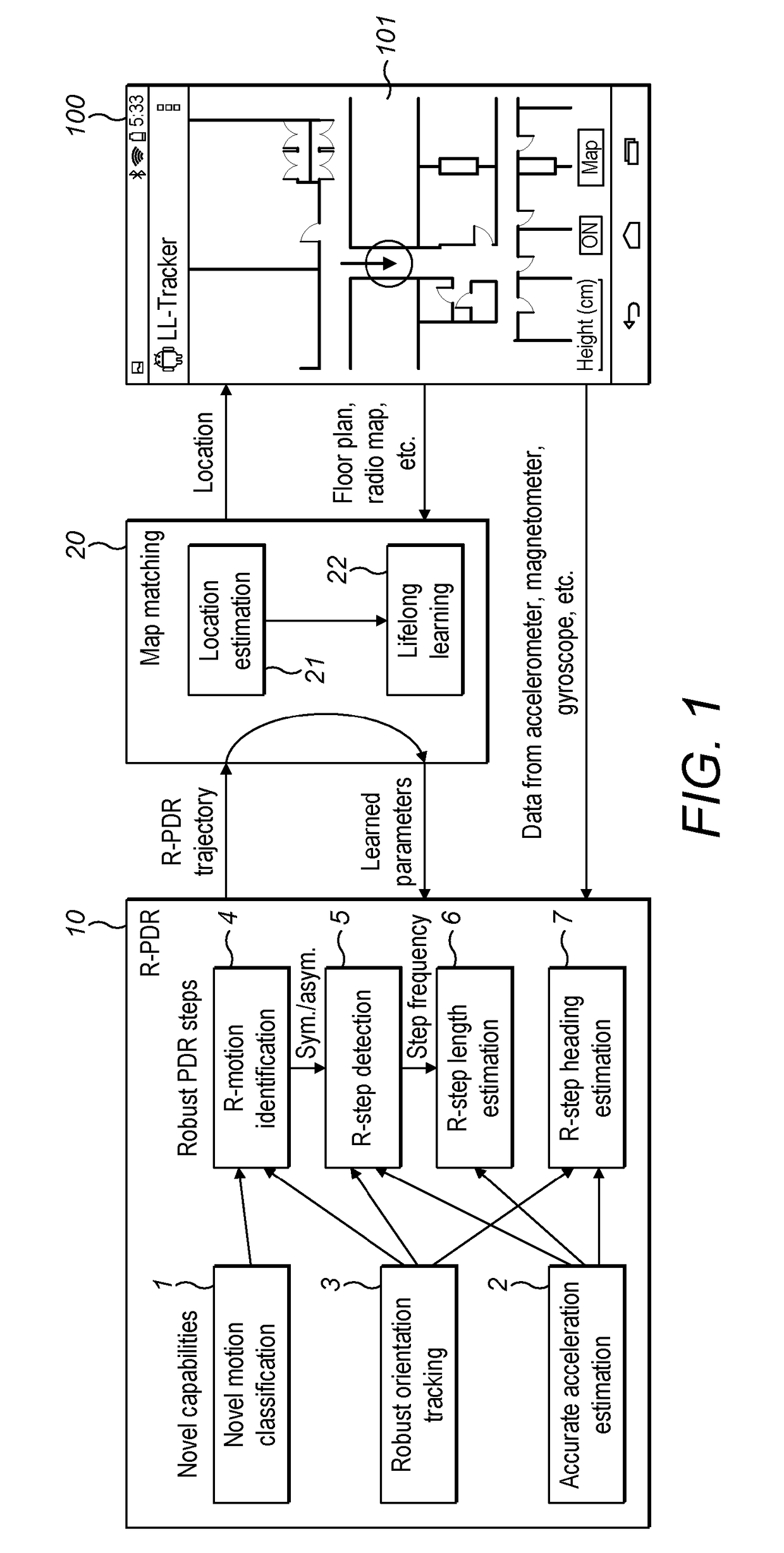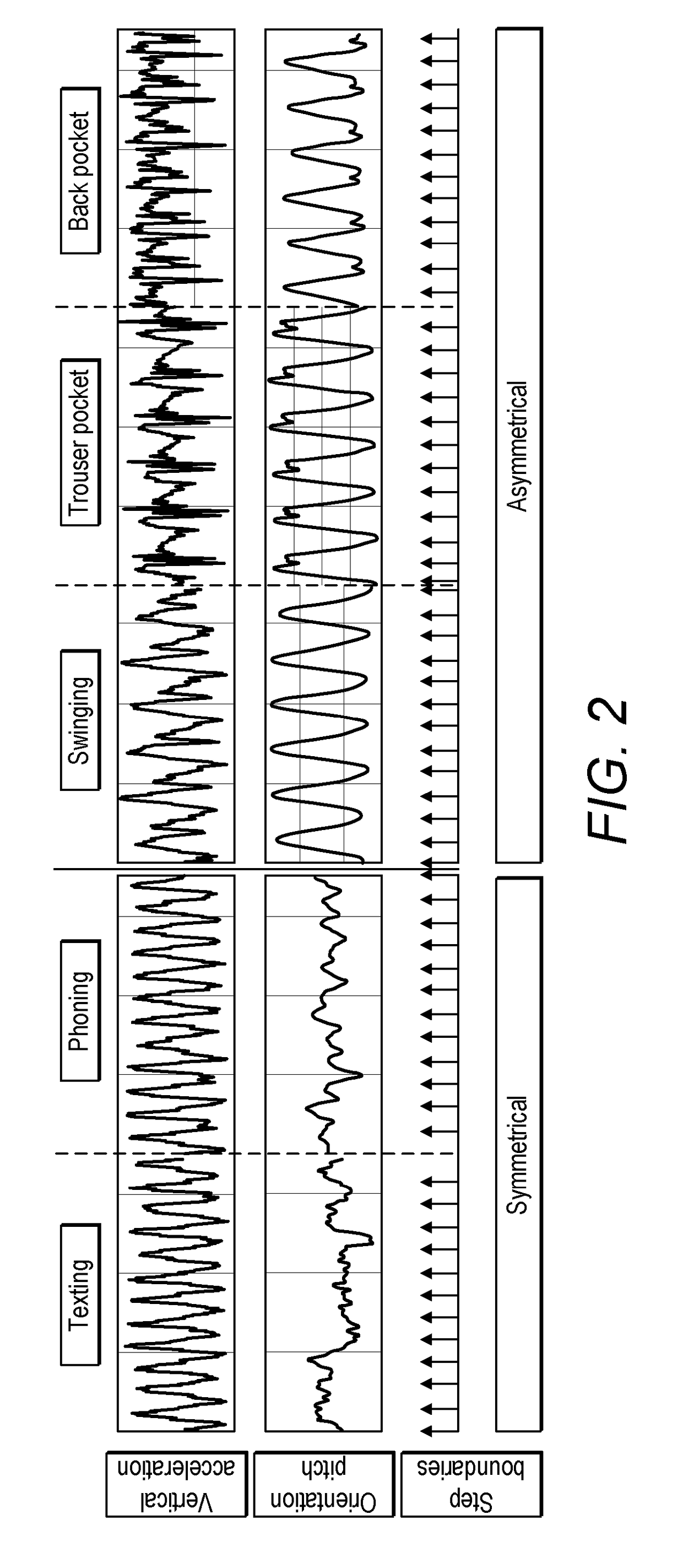Determining the position of a mobile device in a geographical area
a mobile device and geographical area technology, applied in the direction of distance measurement, navigation instruments, instruments, etc., can solve the problems of affecting the performance of the mobile device, the state of the art approaches cannot handle a limited number of phone placement options, and the generality and robustness of existing solutions, so as to improve the performance of any pdr implementation, robust to user, device and phone placement variability
- Summary
- Abstract
- Description
- Claims
- Application Information
AI Technical Summary
Benefits of technology
Problems solved by technology
Method used
Image
Examples
Embodiment Construction
[0081]FIG. 1 shows the system architecture in an embodiment of the invention.
[0082]A smart phone 100 having sensors, such as an accelerometer, magnetometer, gyroscope, etc. is provided with software, the modules of which are shown in the rest of the Figure. The accelerometer, magnetometer and gyroscope are the main sensors but others could be taken into account by the system to provide position, acceleration and orientation signals, such as a barometer, light sensors and so on.
[0083]A first layer of the software, a Robust Pedestrian Dead Reckoning (R-PDR) 10, is equipped with three novel modules: Firstly, it features a novel motion classification scheme 1, which uses only two classes in its classification, but nonetheless captures a wide spectrum of human motion and device placement combinations. Secondly, leveraging simple observations about human motion, R-PDR has an acceleration estimate module 2 with a robust mechanism for correcting short-term and long-term acceleration bias. T...
PUM
 Login to View More
Login to View More Abstract
Description
Claims
Application Information
 Login to View More
Login to View More - R&D
- Intellectual Property
- Life Sciences
- Materials
- Tech Scout
- Unparalleled Data Quality
- Higher Quality Content
- 60% Fewer Hallucinations
Browse by: Latest US Patents, China's latest patents, Technical Efficacy Thesaurus, Application Domain, Technology Topic, Popular Technical Reports.
© 2025 PatSnap. All rights reserved.Legal|Privacy policy|Modern Slavery Act Transparency Statement|Sitemap|About US| Contact US: help@patsnap.com



